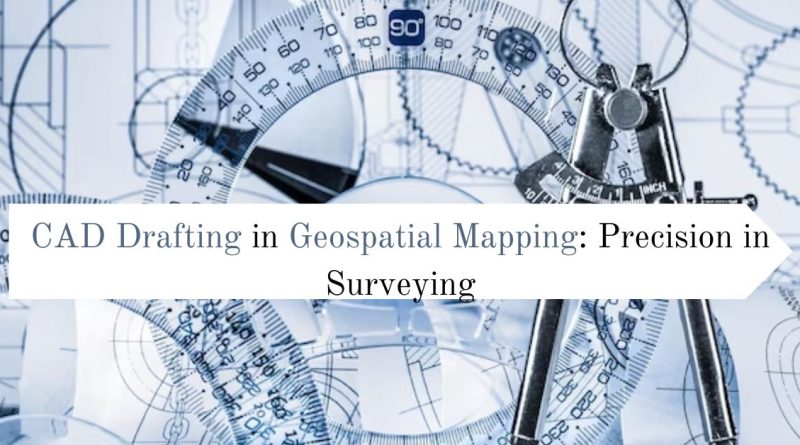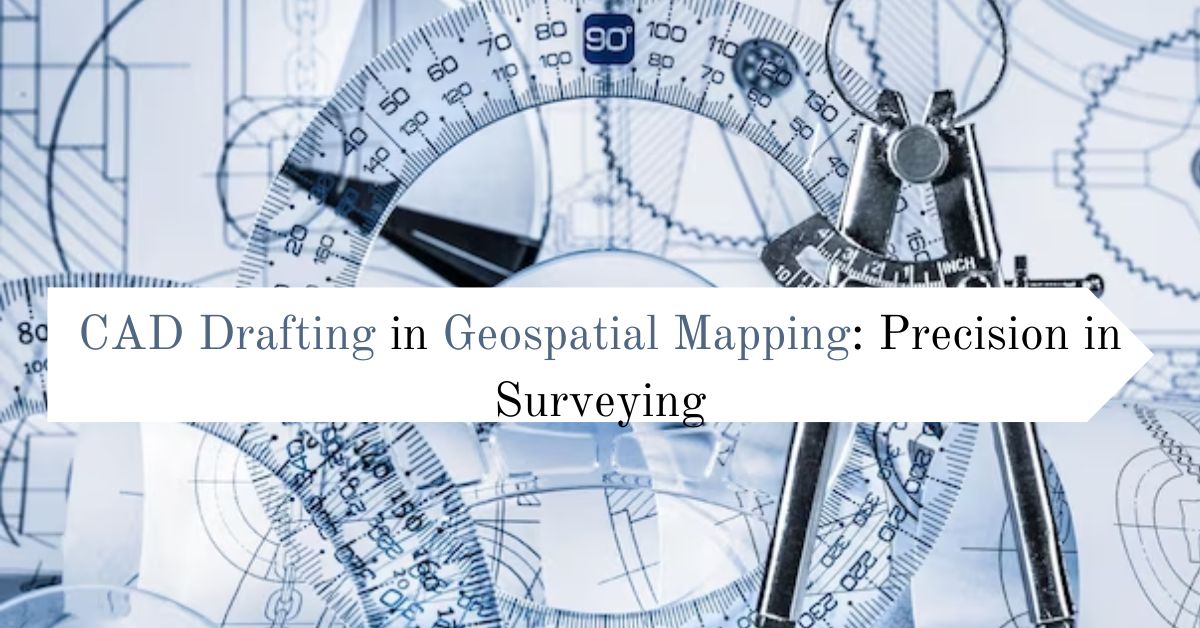CAD Drafting in Geospatial Mapping: Precision in Surveying
Introduction:
Geospatial mapping has become an integral component of modern surveying practices, revolutionizing the way we collect, analyze, and visualize spatial data. With the advent of computer-aided design (CAD) drafting, the precision and efficiency of geospatial mapping have reached unprecedented levels. CAD drafting services plays an important role in bridging the gap between conceptualizing spatial data and transforming it into accurate and visually comprehensible representations. This article explores the symbiotic relationship between CAD drafting and geospatial mapping, highlighting the crucial role they play in ensuring accuracy and reliability in surveying applications.
The Evolution of Geospatial Mapping:
Traditional surveying methods often involved manual measurements, theodolites, and paper maps. While these techniques were reliable, they were time-consuming and had limitations in terms of precision. The evolution of geospatial mapping brought about a paradigm shift by integrating satellite technology, GPS systems, and CAD drafting.
CAD Drafting in Surveying:
CAD drafting has transformed the surveying landscape by providing a digital platform for creating, editing, and managing detailed maps. The use of CAD software allows surveyors to precisely represent geographical features, topography, and property boundaries in a digital format. This not only enhances the accuracy of surveying data but also streamlines the entire mapping process.
Enhanced Precision through Digital Terrain Modeling (DTM):
CAD drafting enables the creation of Digital Terrain Models, allowing surveyors to represent the natural features of the land accurately. By incorporating elevation data, CAD software aids in visualizing and analyzing the terrain, essential for infrastructure projects, urban planning, and environmental assessments.
Efficient Data Integration:
Geospatial mapping is a highly intricate and demanding process that necessitates the integration of numerous data sources. These data sources can consist of satellite imagery, LiDAR (Light Detection and Ranging), and field survey data. The integration of these sources is critical to create a cohesive and accurate representation of the surveyed area. To accomplish this, Computer-Aided Design (CAD) drafting is often employed, which enables the seamless integration of data and the creation of a comprehensive and unified model. This approach ensures that the generated map is not only accurate but also highly detailed, providing valuable insights into the surveyed area.
Streamlined Surveying Workflows:
CAD drafting automates many surveying tasks, reducing manual errors and improving efficiency. Surveyors can input field data directly into CAD software, which then generates accurate maps and drawings. This streamlining of workflows not only saves time but also enhances the overall reliability of surveying results.
Precise Boundary Determination:
CAD drafting allows surveyors to precisely define property boundaries, a critical aspect in land surveying. Accurate representation of boundaries is essential for property disputes, land development projects, and legal documentation. CAD software ensures that these boundaries are represented with the utmost precision.
3D Visualization and Analysis:
One of the significant advantages of CAD drafting in geospatial mapping is the ability to create detailed 3D visualizations. This feature is particularly valuable for urban planning, where understanding the vertical dimension of structures and landscapes is crucial. CAD software aids in simulating and analyzing the impact of new developments on the existing environment.
Challenges and Solutions:
While CAD drafting greatly enhances precision in geospatial mapping, challenges such as data accuracy, software compatibility, and standardization need to be addressed.
Data Accuracy:
The accuracy of geospatial mapping heavily relies on the quality of input data. Surveyors must ensure that data collected from various sources, including GPS devices and LiDAR sensors, is accurate and up-to-date. Regular calibration and validation processes are essential to maintain data integrity.
Software Compatibility:
The compatibility of CAD drafting software with other geospatial tools and databases is crucial. Integration challenges can arise when transferring data between different platforms. Surveying teams must carefully select CAD software that seamlessly integrates with their chosen geospatial tools.
Standardization:
Standardizing data formats and mapping conventions is vital for ensuring consistency and interoperability in geospatial mapping. The industry must work towards establishing and adhering to standardized practices to facilitate collaboration and data sharing among different surveying teams and organizations.
Case Studies:
Urban Development Project:
CAD drafting played a pivotal role in a large-scale urban development project. The surveying team utilized CAD software to create detailed maps of the existing infrastructure, analyze the impact of proposed developments, and simulate various scenarios. This enabled urban planners to make informed decisions, balancing growth with environmental sustainability.
Environmental Impact Assessment:
In an environmental impact assessment for a new infrastructure project, CAD drafting was employed to map ecologically sensitive areas. The precision offered by CAD software allowed surveyors to identify and protect critical habitats, ensuring compliance with environmental regulations.
Conclusion:
The integration of CAD drafting in geospatial mapping has transformed the field of surveying, offering unprecedented levels of precision, efficiency, and visualization. As technology continues to advance, the synergy between CAD drafting and geospatial mapping will play a crucial role in addressing global challenges related to urbanization, infrastructure development, and environmental conservation. Surveyors and mapping professionals must embrace these technological advancements to ensure that their work remains at the forefront of accuracy and reliability in the ever-evolving landscape of geospatial mapping.


